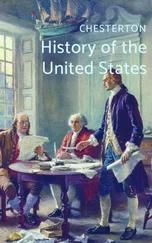Willis Abbot - The Naval History of the United States. Volume 2
Здесь есть возможность читать онлайн «Willis Abbot - The Naval History of the United States. Volume 2» — ознакомительный отрывок электронной книги совершенно бесплатно, а после прочтения отрывка купить полную версию. В некоторых случаях можно слушать аудио, скачать через торрент в формате fb2 и присутствует краткое содержание. Жанр: foreign_antique, foreign_prose, Историческая проза, на английском языке. Описание произведения, (предисловие) а так же отзывы посетителей доступны на портале библиотеки ЛибКат.
- Название:The Naval History of the United States. Volume 2
- Автор:
- Жанр:
- Год:неизвестен
- ISBN:нет данных
- Рейтинг книги:5 / 5. Голосов: 1
-
Избранное:Добавить в избранное
- Отзывы:
-
Ваша оценка:
- 100
- 1
- 2
- 3
- 4
- 5
The Naval History of the United States. Volume 2: краткое содержание, описание и аннотация
Предлагаем к чтению аннотацию, описание, краткое содержание или предисловие (зависит от того, что написал сам автор книги «The Naval History of the United States. Volume 2»). Если вы не нашли необходимую информацию о книге — напишите в комментариях, мы постараемся отыскать её.
The Naval History of the United States. Volume 2 — читать онлайн ознакомительный отрывок
Ниже представлен текст книги, разбитый по страницам. Система сохранения места последней прочитанной страницы, позволяет с удобством читать онлайн бесплатно книгу «The Naval History of the United States. Volume 2», без необходимости каждый раз заново искать на чём Вы остановились. Поставьте закладку, и сможете в любой момент перейти на страницу, на которой закончили чтение.
Интервал:
Закладка:
CHAPTER XIII
In considering the naval operations on the Great Lakes, it must be kept in mind, that winter, which checked but little naval activity on the ocean, locked the great fresh-water seas in an impenetrable barrier of ice, and effectually stopped all further hostilities between the hostile forces afloat. The victory gained by Commodore Perry on Lake Erie in September, 1813, gave the Americans complete command of that lake; and the frozen season soon coming on, prevented any attempts on the part of the enemy to contest the American supremacy. But, indeed, the British showed little ability, throughout the subsequent course of the war, to snatch from the Americans the fruits of the victory at Put-in-Bay. They embarked upon no more offensive expeditions; and the only notable naval contest between the two belligerents during the remainder of the war occurred Aug. 12, 1814, when a party of seventy-five British seamen and marines attempted to cut out three American schooners that lay at the foot of the lake near Fort Erie. The British forces were at Queenstown, on the Niagara River; but by dint of carrying their boats twenty miles through the woods, then poling down a narrow and shallow stream, with a second portage of eight miles, the adventurers managed to reach Lake Erie. Embarking here, they pulled down to the schooners. To the hail of the lookout, they responded, "Provision boats." And, as no British were thought to be on Lake Erie, the response satisfied the officer of the watch. He quickly discovered his mistake, however, when he saw his cable cut, and a party of armed men scrambling over his bulwarks. This first prize, the "Somers," was quickly in the hands of the British, and was soon joined in captivity by the "Ohio," whose people fought bravely but unavailingly against the unexpected foe. While the fighting was going on aboard the vessels, they were drifting down the stream; and, by the time the British victory was complete, both vessels were beyond the range of Fort Erie's guns, and safe from recapture. This successful enterprise certainly deserves a place as the boldest and best executed cutting-out expedition of the war.
Long before this occurrence, Capt. Arthur Singleton, who had succeeded to Perry's command, despairing of any active service on Lake Erie, had taken his squadron of five vessels into Lake Huron, where the British still held the supremacy. His objective point was the Island of Michilimackinac (Mackinaw), which had been captured by the enemy early in the war. On his way, he stopped and burned the British fort and barracks of St. Joseph. At Mackinaw he was repulsed, with the loss of seventy men; after which he returned to Lake Erie, leaving two vessels, the "Scorpion" and "Tigress," to blockade the Nattagawassa River. The presence of these vessels irritated the British, and they at once set about preparations for their capture. On the night of the 3d of September the "Tigress" was captured after a sharp struggle, which, as the British commanding officer said, "did credit to her officers, who were all severely wounded." At the time of the attack, the "Scorpion" was several miles away, and knew nothing of the misfortune of her consort. Knowing this, the British sent their prisoners ashore, and, hoisting the American flag over the captured vessel, waited patiently for their game to come to them. They were not disappointed in their expectations. On the 5th the "Scorpion" came up, and anchored, unsuspectingly, within two miles of her consort. At early dawn the next morning the "Tigress" weighed anchor; and, with the stars and stripes still flying, dropped down alongside the unsuspecting schooner, poured in a sudden volley, and, instantly boarding, carried the vessel without meeting any resistance.
With these two skirmishes, the war upon Lake Erie and Lake Huron was ended. But on Lake Ontario the naval events, though in no case comparable with Perry's famous victory, were numerous and noteworthy.
In our previous discussion of the progress of the war upon Lake Ontario, we left Commodore Chauncey in winter quarter at Sackett's Harbor, building new ships, and making vigorous efforts to secure sailors to man them. His energy met with its reward; for, when the melting ice left the lake open for navigation in the spring of 1813, the American fleet was ready for active service, while the best vessels belonging to the British were still in the hands of the carpenters and riggers. The first service performed by the American fleet was aiding Gen. Pike in his attack upon York, where the Americans burned an almost completed twenty-four-gun ship, and captured the ten-gun brig "Gloucester." The land forces who took part in this action were terribly injured by the explosion of the powder-magazine, to which the British had applied a slow-match when they found they could no longer hold their position. This battle was fought April 27, 1813. One month later, the naval forces co-operated with the soldiery in driving the British from Fort George, on the Canada side of the Niagara River, near Lake Ontario. Perry came from Lake Erie to take part in this action, and led a landing party under the fire of the British artillery with that dashing courage which he showed later at the battle of Put-in-Bay. The work of the sailors in this action was cool and effective. Their fire covered the advance of the troops, and silenced more than one of the enemy's guns. "The American ships," writes a British historian, "with their heavy discharges of round and grape, too well succeeded in thinning the British ranks."
But by this time the British fleet was ready for sea, and left Kingston on the 27th of May; while Chauncey was still at the extreme western end of the lake. The enemy determined to make an immediate assault upon Sackett's Harbor, and there destroy the corvette "Gen. Pike," which, if completed, would give Chauncey supremacy upon the lake. Accordingly the fleet under Sir James Lucas Yeo, with a large body of troops under Sir George Prescott, appeared before the harbor on the 29th. Although the forces which rallied to the defence of the village were chiefly raw militia, the British attack was conducted with so little spirit that the defenders won the day; and the enemy retreated, leaving most of his wounded to fall into the hands of the Americans. Yeo then returned to Kingston; and the American fleet came up the lake, and put into Sackett's Harbor, there to remain until the completion of the "Pike" should give Chauncey control of the lake. While the Americans thus remained in port, the British squadron made brief incursions into the lake, capturing a few schooners and breaking up one or two encampments of the land forces of the United States.
Not until the 21st of July did the Americans leave their anchorage. On that day, with the formidable corvette "Pike" at the head of the line, Chauncey left Sackett's Harbor, and went up to Niagara. Some days later, Yeo took his squadron to sea; and on the 7th of August the two hostile fleets came in sight of one another for the first time. Then followed a season of manœuvring, – of challenging and counter-challenging, of offering battle and of avoiding it, – terminating in so inconclusive an engagement that one is forced to believe that neither commander dared to enter the battle for which both had been so long preparing. The American squadron consisted largely of schooners armed with long guns. In smooth weather these craft were valuable adjuncts to the larger vessels, while in rough weather they were useless. Yeo's squadron was mostly square-rigged, and was therefore equally serviceable in all kinds of weather. It seems likely, therefore, that the Americans strove to bring on the conflict in smooth weather; while the British were determined to wait until a heavy sea should lessen the force of their foes. In this dilemma several days passed away.
Читать дальшеИнтервал:
Закладка:
Похожие книги на «The Naval History of the United States. Volume 2»
Представляем Вашему вниманию похожие книги на «The Naval History of the United States. Volume 2» списком для выбора. Мы отобрали схожую по названию и смыслу литературу в надежде предоставить читателям больше вариантов отыскать новые, интересные, ещё непрочитанные произведения.
Обсуждение, отзывы о книге «The Naval History of the United States. Volume 2» и просто собственные мнения читателей. Оставьте ваши комментарии, напишите, что Вы думаете о произведении, его смысле или главных героях. Укажите что конкретно понравилось, а что нет, и почему Вы так считаете.











![Hubert Bancroft - The Native Races [of the Pacific states], Volume 5, Primitive History](/books/749157/hubert-bancroft-the-native-races-of-the-pacific-s-thumb.webp)
![Hubert Bancroft - The Native Races [of the Pacific states], Volume 1, Wild Tribes](/books/750126/hubert-bancroft-the-native-races-of-the-pacific-s-thumb.webp)